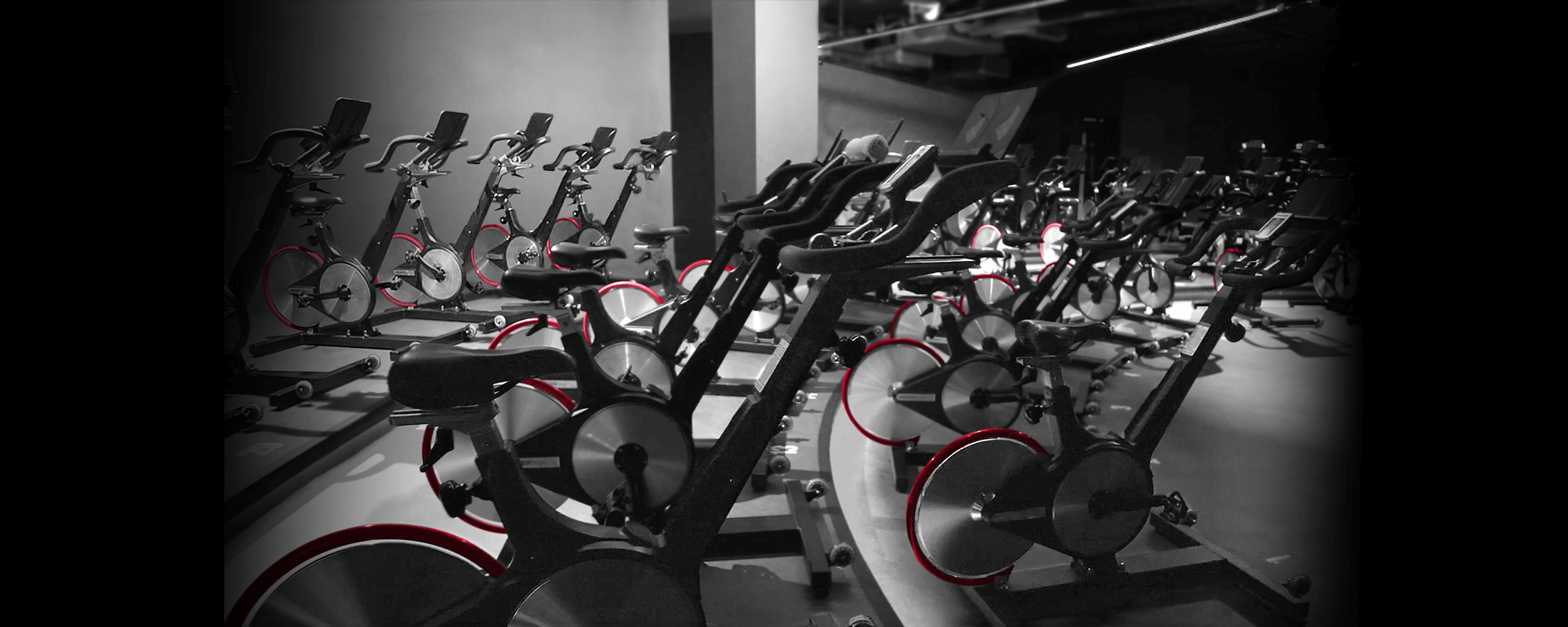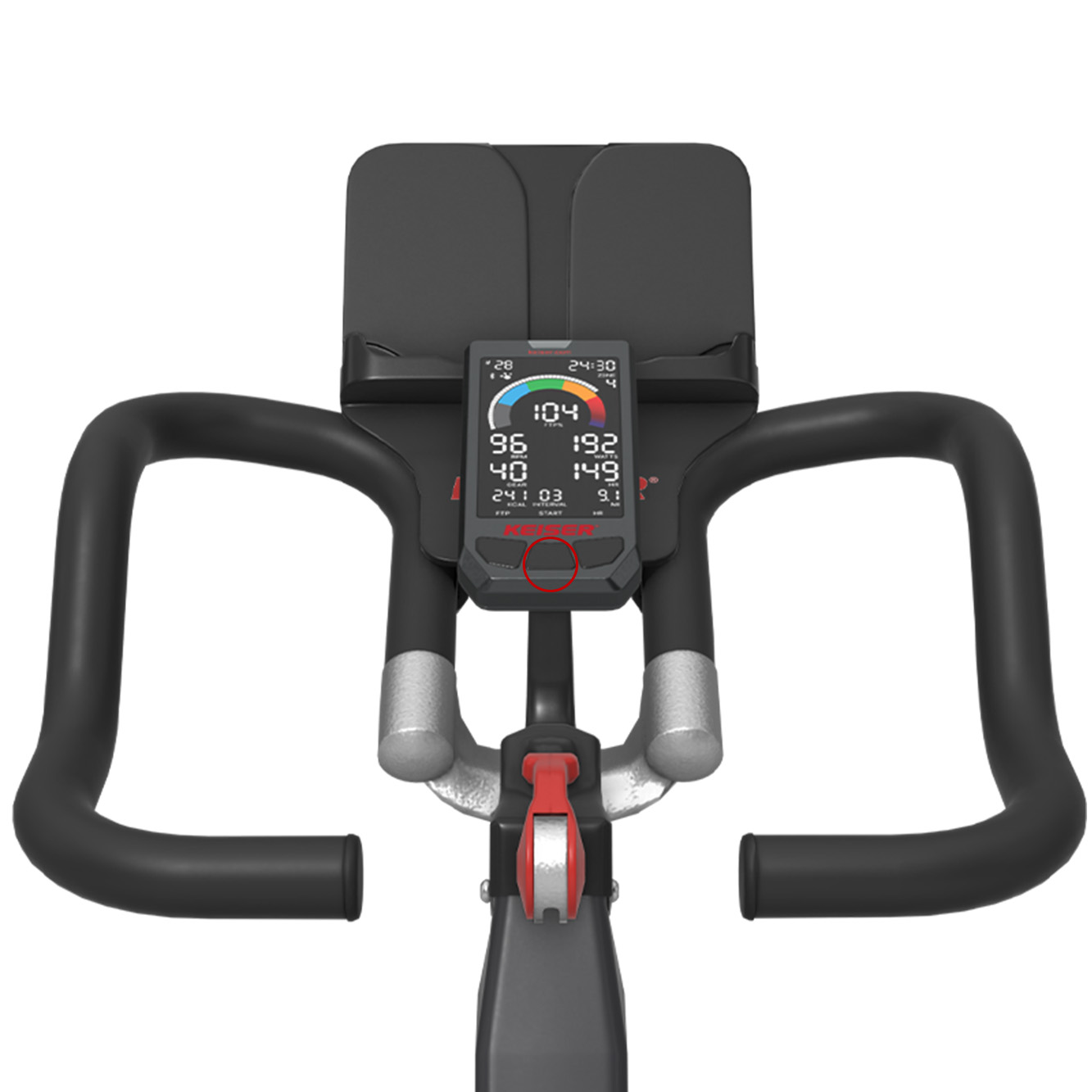6 min read

A Guide to Indoor Cycling Metrics and Intensity Training on the M3i
How to train using intensity zones on the M3i.
Unlock the full potential of every cycling session with Keiser's precision approach to training. We understand that the resistance that feels like a gentle slope to one rider might be another's mountain climb. That's why we focus on coaching with intensity, not just gear numbers. By harnessing the power of three key indicators—Power (watts), Heart Rate (BPM), and RPE (Rating of Perceived Exertion), —we empower each rider to find their perfect challenge level and maximize the benefits of every class.
To truly tailor your training and see the results you're aiming for, it's important to understand intensity training zones. Training zones in indoor cycling are used to categorize the intensity of a workout, allowing cyclists to target specific fitness goals and track progress over time.
Functional Threshold Power (FTP): Imagine the strongest, sustained effort you can maintain for an hour – that's your FTP and measured in watts. It's a benchmark for setting up personalized training zones, making your workouts more structured and goal-oriented.
Maximum Heart Rate (HR Max): This is the upper limit of what your cardiovascular system can handle during physical activity. Knowing your HR Max helps you train at the right intensity for maximum benefit.
Rating of Perceived Exertion (RPE): Listen to your body. RPE is a way to measure the intensity of your exercise based on how hard you feel like you're working. It's a personal gauge to ensure you're pushing yourself effectively, without the need for technology.
Ride By Color™ Zones
● Zone 1: Very Easy Helps with recovery
● Zone 2: Easy Improves basic endurance and fat-burning
● Zone 3: Moderate Improves aerobic fitness
● Zone 4: Hard Increases maximum performance capacity for shorter sessions
● Zone 5: Very Hard Improves oxygen utilization to reduce fatigue in high-intensity efforts
Training Zone Estimator
Enhance your training regimen with Keiser’s free intensity zone calculator. By determining your FTP and HR training zones, you'll gain valuable insights into applying these metrics effectively to your training. Tailored to your unique profile, our estimation tool considers factors such as age, gender, weight, and training frequency to establish personalized training zones. This understanding will lay the groundwork for comprehending the concepts discussed below, improving your ability to apply these metrics to your training routine.
Try our estimator tool below to determine your training zones for power, heart rate, and RPE.
Zones
Z1
Z2
Z3
Z4
Z5
Power
Very Easy
Easy
Moderate
Hard
Very Hard
DUMMY
<55%
56% - 75%
76% - 90%
91% - 105%
106% - 150%
Watts
<117
<117-159
<159-191
<191-223
<223-318
Zones
Z1
Z2
Z3
Z4
Z5
Heart Rate
Recovery
Endurance
Aerobic
Anaerobic
VO2 Max +
DUMMY
50% - 60%
60% - 70%
70% - 80%
80% - 90%
90% - 100%
BPM
96-115
115-134
134-154
154-173
173-192
The following guide equips you with the insights to customize your training through Power, RPE, and Heart Rate, ensuring every ride on the Keiser M3i is efficient and transformative.
Training with Power and FTP
Power, displayed in watts on the M3i, is the culmination of both your muscular force in relation to gears and your velocity based on your rpm. In its simplest form:
Power = Force x Velocity
By defining your Functional Threshold Power and tailored intensity zones, it’s like having a personal coach right on your handlebars, guiding you to train in the perfect zone for you. This way, you'll push your limits just enough to grow stronger, but not so hard that you risk overtraining.
Using the M Series App for FTP Testing:
Alongside the Intensity calculator, the Keiser M Series app offers a built-in feature for riders to conduct FTP testing. Enhance your training by utilizing the app's FTP testing feature, crafted to refine your workout intensity and maximize your performance.
- Preparation: Download the M Series App and ensure your indoor bike is compatible. Select the bike number in the app that corresponds to your bike number.
- Select the Test: In the app, choose either the 5-minute or 20-minute FTP test based on your preference and fitness level.
- Execute the Test: After following the warm-up protocol, ride with consistent effort throughout the chosen test duration. The app will provide visual cues to help you stay within the correct intensity zones.
- Record Your Results: Upon completion, the app will calculate and display your estimated FTP. Save this information in your profile to track your progress over time.
Guided Video Instructions Using the M Series App
Watch as master trainer Sergio Velasco provides guided instructions for determining your FTP using the Keiser M Series app.
How Often Should You Take An FTP Test?
By conducting an FTP assessment every 4-6 weeks or as needed based on your goals, you harness the power of personalized training plans. This strategic approach calibrates your workout intensity to your current fitness capabilities, guaranteeing that each session is optimally challenging and efficient.
Using Power Intensity Zones
Power intensity zones are essential tools for cyclists and athletes looking to improve their performance. The following zones are based on percentages of your FTP, each targeting different aspects of your fitness.
● Zone 1: Very Easy <55% of FTP. This is where you promote blood flow and recovery without adding stress to your body. It's the gentle hum of your engine on rest days.
● Zone 2: Easy 56% to 75% of FTP. Here, you're building the foundation of your fitness, enhancing your body's ability to utilize fat as fuel, and increasing your aerobic capacity.
● Zone 3: Moderate 76% to 90% of FTP. You're now pushing into a more challenging effort, improving your muscular endurance and teaching your body to perform comfortably at a moderate pace.
● Zone 4: Hard 91% to 105% of FTP. This is where you start to feel the hard effort level, training your body to delay fatigue and increase the intensity you can maintain.
● Zone 5: Very Hard 106% to 150% of FTP. Intense work sets in this zone improve your maximal oxygen uptake and push your performance boundaries.
FTP Test Results Example
The watts listed below are derived from an FTP calculation of 212. The results shown are for a 35-year-old male weighing 190 pounds, who typically trains for 1-3 hours per week. Refer to the intensity zone calculator or perform an FTP test to determine your own individual watts.
Training using HR Max
Discover your peak performance with Keiser's heart rate insights. While smartwatches and other technology offer a quick glance at your heart rate, estimating your maximum heart rate can vary due to individual differences. In addition to using technology, there are many other methods available for estimating predicted heart rate. The following formula is just one example of many.
For women: 210 – (your age divided by 2) – (5% of your body weight in pounds) = bpm
For men: 210 – (your age divided by 2) – (5% of your body weight in pounds) + 4 = bpm
Heart Rate Zones
After establishing a predicted max heart rate, use it to define your training zones to help you stay in your optimal zone for maximum efficiency. Each zone is designed to meet a specific training objective. For example, for those dedicated to endurance or aerobic training, target 60–70% of your maximum heart rate to stay in the optimal zone. By aligning your heart rate with these zones, you're not just working out – you're engaging in a fitness journey tailored to your body's responses.
● Zone 1: Recovery level at 50 to 60% of heart rate max (HRM)
● Zone 2: Endurance level at 60 to 70% HRM
● Zone 3: Aerobic level at 70 to 80% HRM
● Zone 4: Anaerobic threshold at 80 to 90% HRM
● Zone 5: VO2 Max+ level at above 90% HRM
Heart Rate Example
The BPM’s listed below are derived from a predicted HRMax calculation of 192. The results shown are tailored for a 35-year-old male weighing 190 pounds, who typically trains for 1-3 hours per week. Refer to the intensity zone calculator to determine your own individual BPM’s.
.png?width=372&height=132&name=ZONES%20(6).png)
Training using Rate of Perceived Exertion
Training with RPE allows you to tailor your workout intensity to your personal fitness level, ensuring you're challenged just enough to make significant gains without the risk of overexerting yourself. The following zones indicate how they should feel while cycling:
● Zone 1: Very easy, a light feeling in the legs, should feel effortless, a pace you could sustain indefinitely, perfect for recovery and cool down.
● Zone 2: Easy, still a light feeling in the legs, still comfortable, where full conversations flow easily—ideal for warm-ups and more active recovery.
● Zone 3: Moderate, you could only hold a limited conversation and will have to focus to meet the required RPM. Heart rate will rise and you will no longer be in a recovery zone.
● Zone 4: Hard, the heart rate will be high and legs feel heavy.
● Zone 5: Very Hard, you will likely be unable to talk as total focus will be needed. Your heart rate will be high, legs will feel very heavy.
Training using the M3i Studio Display
With the M3i Studio Display, it is not necessary to ride with an app as you can enter your metrics directly into the console. Elevate your cycling experience by entering your Functional Threshold Power (FTP), Maximum Heart Rate (HR Max), and even your weight into the M3i Studio Display. This activates the Ride by Color™ system, customizing your session with real-time feedback that's both inspiring and precise.
.png)
How to Enter Your Metrics
Entering your FTP and HR Max is a straightforward process:
- Before starting your ride, power on the Studio Display by pedaling.
- Navigate to the settings menu by pressing the center button to enter user data.
- Input your FTP value and HR Max by pressing the left and right buttons to input the numbers.
- Confirm your entries, by clicking the center button again.

The display will now show your effort in a spectrum of colors, each representing a different training zone. As you ride, you'll be able to monitor your performance and adjust your effort to match the targeted zones for your workout.
Refer to the quick set-up guide for more information on the M3i Studio Display features
By incorporating Power, Heart Rate, and Rating of Perceived Exertion into every ride, cyclists can refine their workouts with precision and intention. Whether your goal is to set personal records or improve your overall well-being, leveraging this precision approach ensures that each effort you put in contributes meaningfully to your progress.

